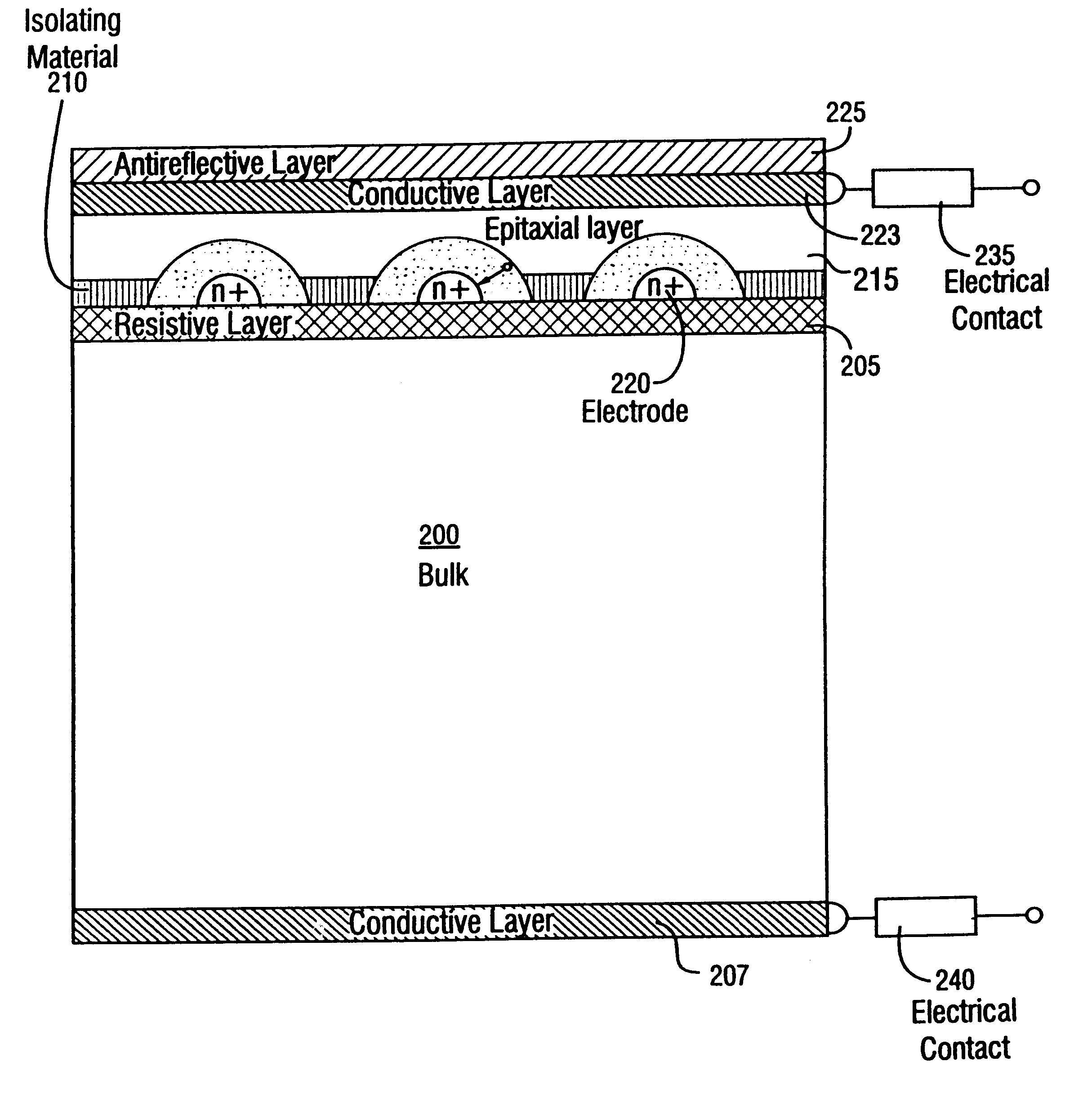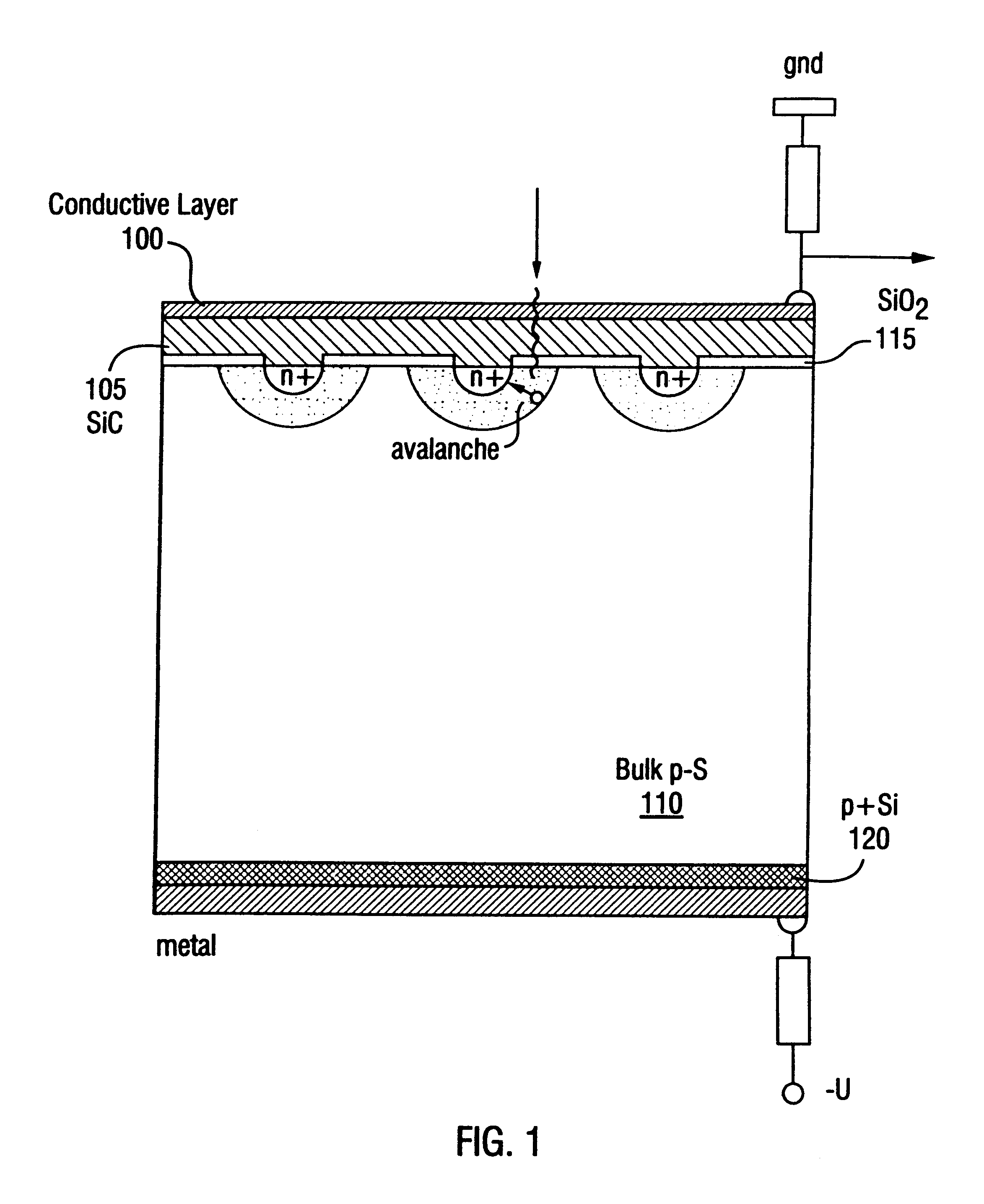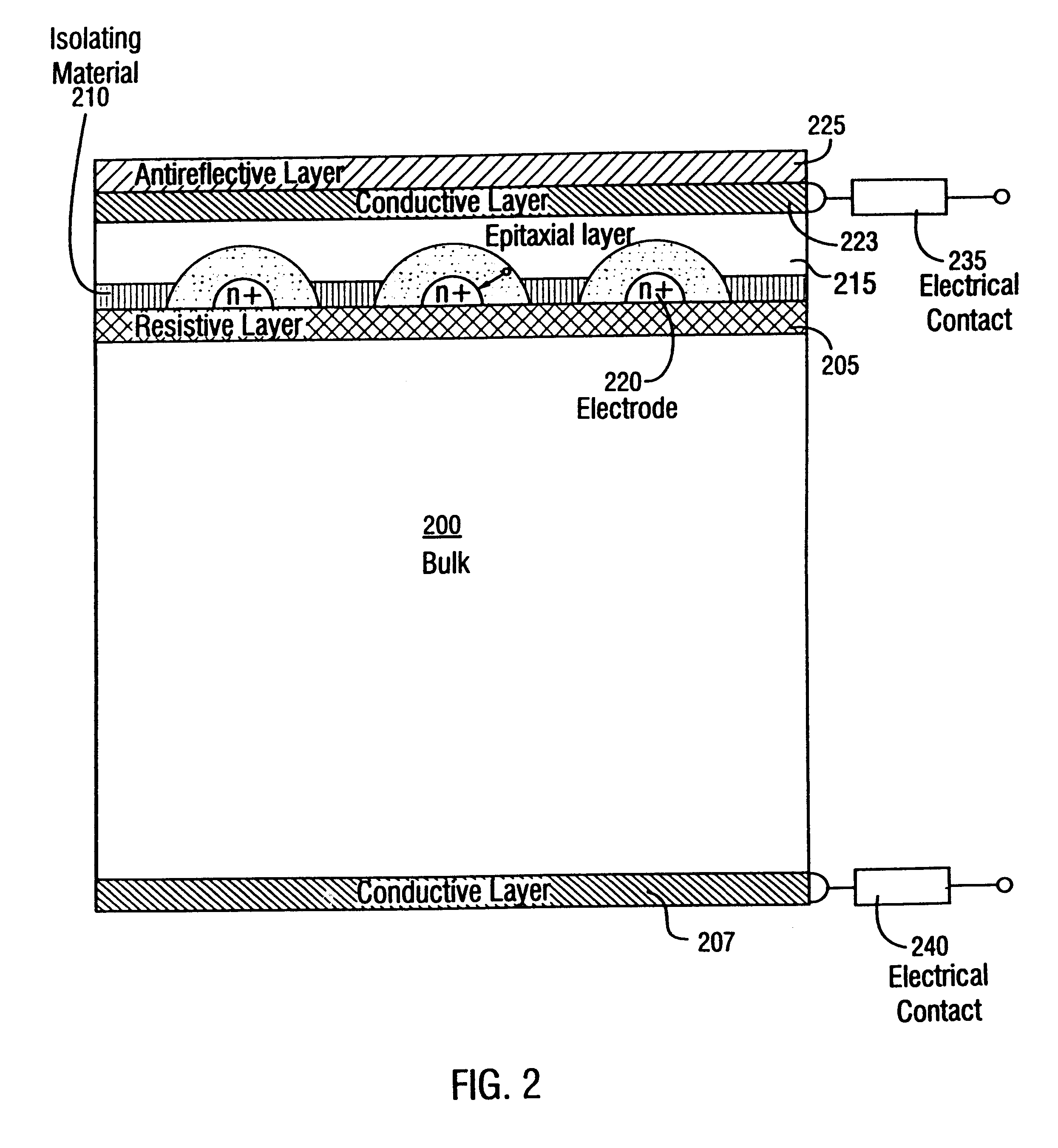Wide wavelength range high efficiency avalanche light detector with negative feedback
a technology of avalanche light and negative local feedback, which is applied in the field of light detection, can solve the problems of limiting the ability to detect light, limiting the use of multi-channel elements with high gain, and difficult production of large area and multi-channel elements with high gain, and achieves the effect of low impedance substra
- Summary
- Abstract
- Description
- Claims
- Application Information
AI Technical Summary
Problems solved by technology
Method used
Image
Examples
Embodiment Construction
Illustrative embodiments of the invention are described below as it might be employed in a novel design of a conductor-resistor-semiconductor (CRS) avalanche detector for photon detection and signal amplification. In the interest of conciseness, not all features of an actual implementation are described in this specification. It will of course be appreciated that in the development of any such actual embodiment numerous implementation-specific decisions must be made to achieve the developers' specific goals, such as compliance with system-related and business-related constraints, which will vary from one implementation to another. Moreover, it will be appreciated that though such a development effort might be complex and time-consuming, it would nevertheless be a routine undertaking for those of ordinary skill having the benefit of this disclosure.
5.1 Overview
When light quantum enters a substrate (e.g., silicon), it creates an electron-hole pair. The electrons are collected in a sma...
PUM
 Login to View More
Login to View More Abstract
Description
Claims
Application Information
 Login to View More
Login to View More - R&D
- Intellectual Property
- Life Sciences
- Materials
- Tech Scout
- Unparalleled Data Quality
- Higher Quality Content
- 60% Fewer Hallucinations
Browse by: Latest US Patents, China's latest patents, Technical Efficacy Thesaurus, Application Domain, Technology Topic, Popular Technical Reports.
© 2025 PatSnap. All rights reserved.Legal|Privacy policy|Modern Slavery Act Transparency Statement|Sitemap|About US| Contact US: help@patsnap.com



